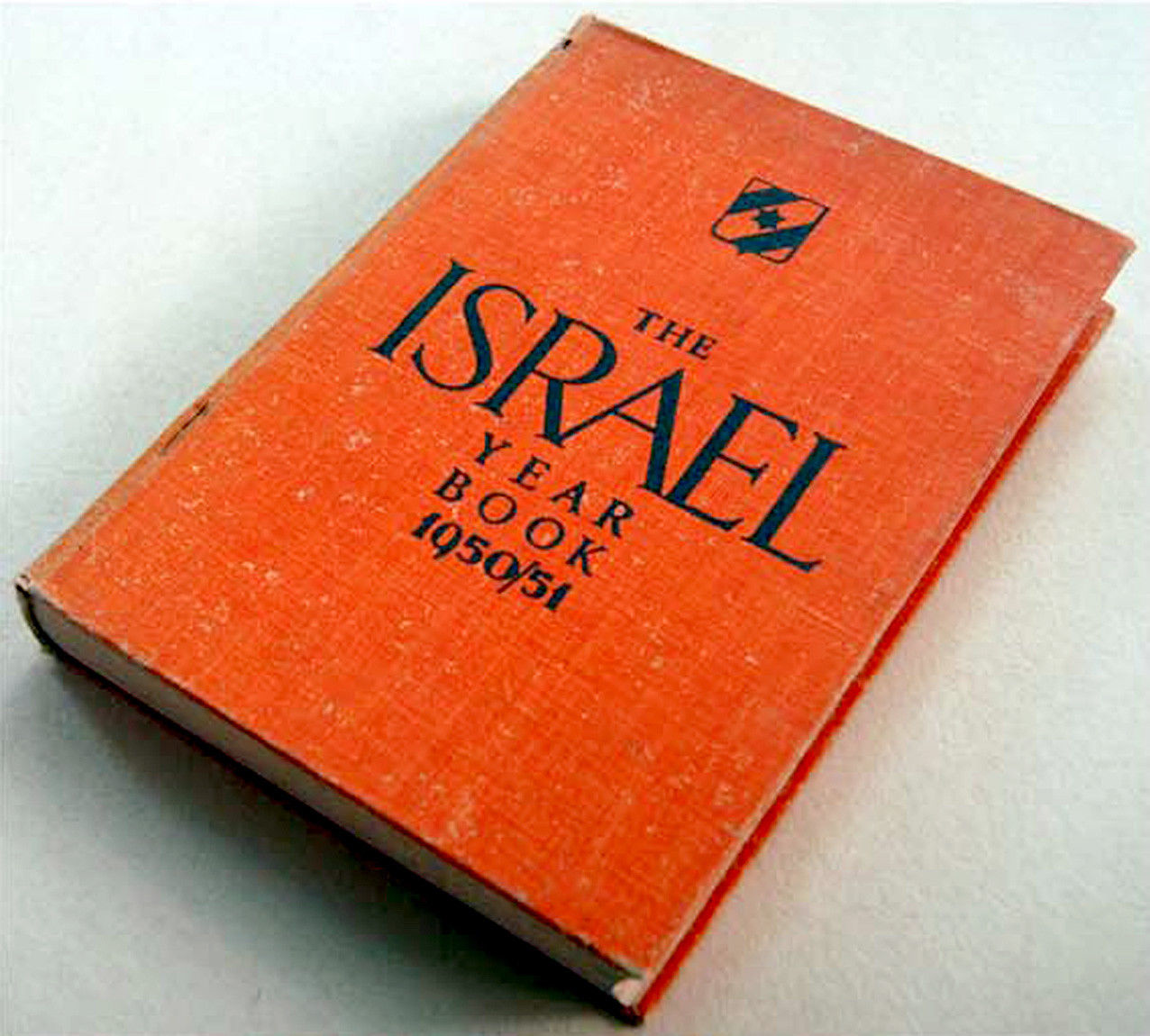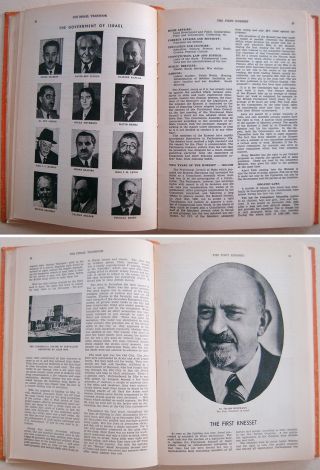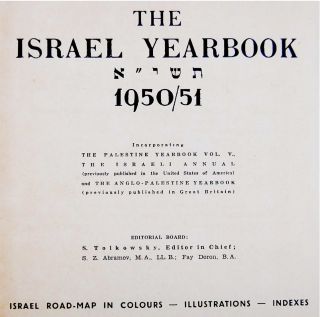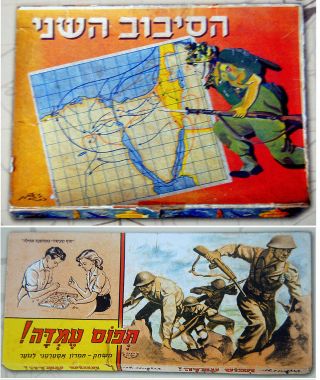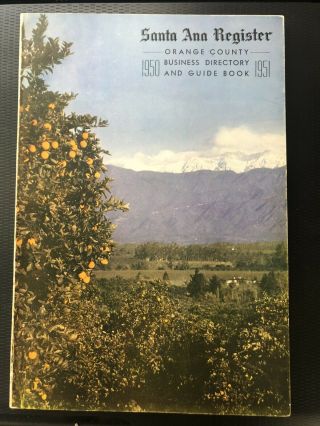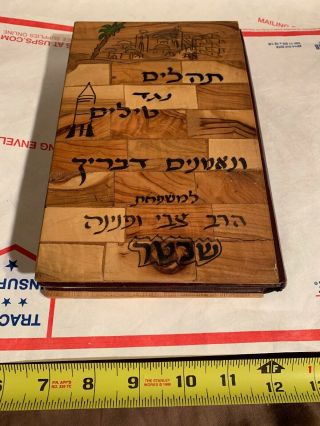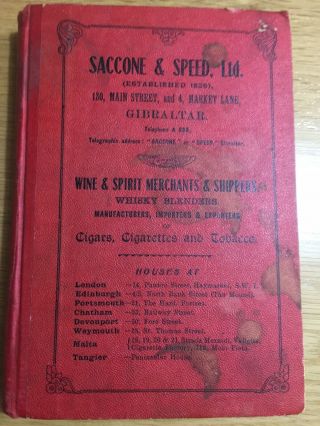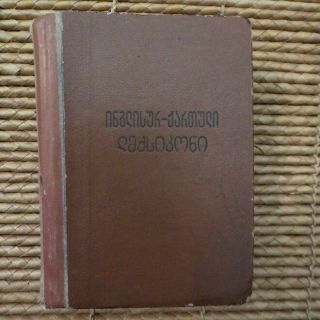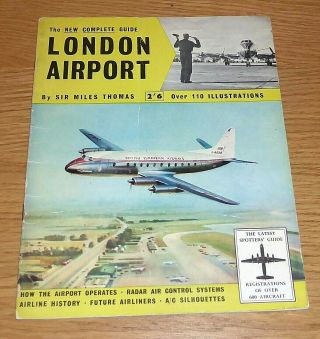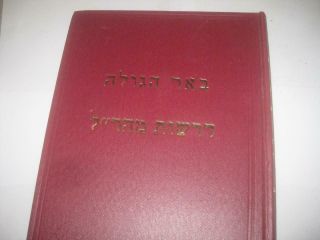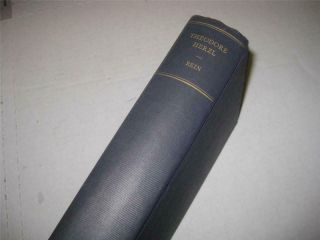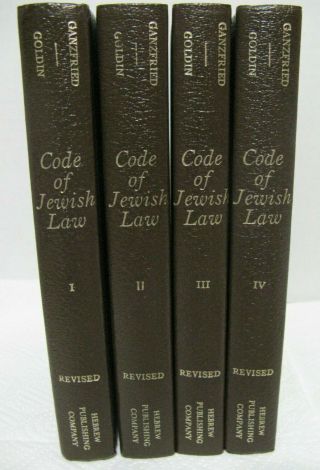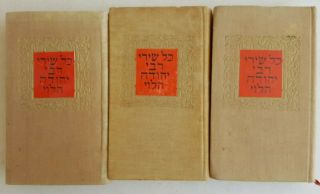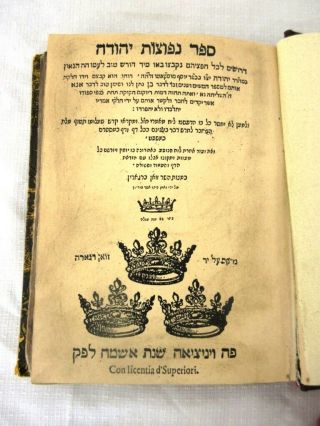1950 English ISRAEL YEARBOOK Directory GUIDE BOOK Judaica MAPS PHOTOS INDEX LIST
Item History & Price
| Reference Number: Avaluer:13584759 | Country/Region of Manufacture: Israel |
| Country of Manufacture: Israel |
SHIPPMENT : SHIPP worldwide via registeredairmail $18 . Book will be sent inside a protective envelope . Handlingwithin 3-5 days after payment. Estimated duration 14 days.
Israel (/ˈɪzreɪəl/; Hebrew: יִשְׂרָאֵל Yisrā'el; Arabic: إِسْرَائِيل Isrāʼīl), officially known as the State of Israel (Hebrew: מְדִינַת יִשְׂרָאֵל Medīnat Yisrā'el [mediˈnat jisʁaˈʔel]; Arabic: دَوْلَة إِسْرَائِيل Dawlat Isrāʼīl [dawlat ʔisraːˈʔiːl]), is a country in the Middle East, on the southeastern shore of the Mediterranean Sea and the northern shore of the Red Sea. It has land borders with Lebanon to the north, Syria to the northeast, Jordan on the east, the Palestinian territories of the West Bank and Gaza Strip[7] to the east and west, respectively, and Egypt to the southwest. The country contains geographically diverse features within its relatively small area.[8][9] Israel's financial and technology center is Tel Aviv[10] and Jerusalem is the proclaimed capital, although Israeli sovereignty over Jerusalem is internationally unrecognized.[note 1][11][12]On 29 November 1947, the United Nations General Assembly adopted a Partition Plan for Mandatory Palestine. This specified borders for new Arab and Jewish states and an area of Jerusalem which was to be administered by the UN under an international regime.[13][14] The end of the British Mandate for Palestine was set for midnight on 14 May 1948. That day, David Ben-Gurion, the executive head of the Zionist Organization and president of the Jewish Agency for Palestine, declared "the establishment of a Jewish state in Eretz Israel, to be known as the State of Israel", which would start to function from the termination of the mandate.[15][16][17] The borders of the new state were not specified in the declaration.[14][18] Neighboring Arab armies invaded the former British mandate on the next day and fought the Israeli forces.[19][20] Israel has since fought several wars with neighboring Arab states, [21] in the course of which it has occupied the West Bank, Sinai Peninsula (1956–57, 1967–82), part of Southern Lebanon (1982–2000), Gaza Strip (1967–2005; still considered occupied after 2005 disengagement) and the Golan Heights. It extended its laws to the Golan Heights and East Jerusalem, but not the West Bank.[22][23][24][25] Efforts to resolve the Israeli–Palestinian conflict have not resulted in peace. However, peace treaties between Israel and both Egypt and Jordan have successfully been signed. Israel's occupation of Gaza, the West Bank and East Jerusalem is the world's longest military occupation in modern times.[note 2][27]The population of Israel, as defined by the Israel Central Bureau of Statistics, was estimated in 2016 to be 8, 541, 000 people. It is the world's only Jewish-majority state, with 6, 388, 800 citizens, or 74.8%, being designated as Jewish. The country's second largest group of citizens are Arabs, numbering 1, 775, 400 people (including the Druze and most East Jerusalem Arabs).[1][2] The great majority of Israeli Arabs are Sunni Muslims, including significant numbers of semi-settled Negev Bedouins; the rest are Christians and Druze. Other minorities include Arameans, Assyrians, Samaritans, Armenians, Circassians, Dom people, Maronites and Vietnamese. The Black Hebrew Israelitesare subject to a slow process of deeper integration, but are still in their majority permanent residents rather than citizens.[28][29][30][31] Israel also hosts a significant population of non-citizen foreign workers and asylum seekers from Africa and Asia, [32] including illegal migrants from Sudan, Eritrea and other Sub-Saharan Africans.In its Basic Laws, Israel defines itself as a Jewish and democratic state.[33] Israel is a representative democracy[34]with a parliamentary system, proportional representation and universal suffrage.[35][36] The prime minister serves as head of government and the Knesset serves as the legislature. Israel is a developed country and an OECDmember, [37] with the 35th-largest economy in the world by nominal gross domestic product as of 2015. The country benefits from a highly skilled workforce and is among the most educated countries in the world with the one of the highest percentage of its citizens holding a tertiary education degree.[38][39] The country has the highest standard of living in the Middle East and the third highest in Asia, [40][41][42] and has one of the highest life expectancies in the world.[43]Contents [hide] 1 Etymology2 History2.1 Antiquity2.2 Classical period2.3 Middle Ages and modern history2.4 Zionism and British mandate2.5 After World War II2.6 First years of the State of Israel2.7 Six-Day War and Yom Kippur War2.8 Further conflict and peace process3 Geography and environment3.1 Tectonics and seismicity3.2 Climate4 Demographics4.1 Language4.2 Religion4.3 Education5 Politics5.1 Legal system5.2 Administrative divisions5.3 Israeli-occupied territories5.4 Foreign relations5.5 International humanitarian efforts5.6 Military6 Economy6.1 Science and technology6.2 Transportation6.3 Tourism6.4 Energy7 Culture7.1 Literature7.2 Music and dance7.3 Cinema and theatre7.4 Media7.5 Museums7.6 Cuisine7.7 Sports8 See also9 Notes10 References11 Bibliography12 External linksEtymologyThe Merneptah Stele(13th century BC). The majority of biblical archeologists translate a set of hieroglyphs as "Israel, " representing the first instance of the name in the record.Upon independence in 1948, the country formally adopted the name "State of Israel" (Medinat Yisrael) after other proposed historical and religious names including Eretz Israel ("the Land of Israel"), Zion, and Judea, were considered and rejected.[44] In the early weeks of independence, the government chose the term "Israeli" to denote a citizen of Israel, with the formal announcement made by Minister of Foreign Affairs Moshe Sharett.[45]The names Land of Israel and Children of Israel have historically been used to refer to the biblical Kingdom of Israel and the entire Jewish people respectively.[46] The name "Israel" (Standard Yisraʾel, Isrāʾīl; Septuagint Greek: Ἰσραήλ Israēl; 'El(God) persists/rules' though, after Hosea 12:4 often interpreted as "struggle with God"[47][48][49][50]) in these phrases refers to the patriarch Jacob who, according to the Hebrew Bible, was given the name after he successfully wrestled with the angel of the Lord.[51] Jacob's twelve sons became the ancestors of the Israelites, also known as the Twelve Tribes of Israel or Children of Israel. Jacob and his sons had lived in Canaan but were forced by famine to go into Egypt for four generations, lasting 430 years, [52] until Moses, a great-great grandson of Jacob, [53] led the Israelites back into Canaan during the "Exodus". The earliest known archaeological artifact to mention the word "Israel" is the Merneptah Stele of ancient Egypt (dated to the late 13th century BCE).[54]The area is also known as the Holy Land, being holy for all Abrahamic religions including Judaism, Christianity, Islam and the Bahá'í Faith. From 1920, the whole region was known as Palestine (under British Mandate)[note 3] until the Israeli Declaration of Independence of 1948.[55] Through the centuries, the territory was known by a variety of other names, including Judea, Samaria, Southern Syria, Syria Palaestina, Kingdom of Jerusalem, Iudaea Province, Coele-Syria, Djahy, and Canaan.HistoryMain article: History of IsraelAntiquityMain article: History of ancient Israel and JudahFurther information: Israelites, Kingdom of Israel (united monarchy), Kingdom of Israel (Samaria), and Kingdom of JudahMap of the Kingdom of Israel, 1020 BCE–930 BCE as imagined from the Bible narrative[citation needed]The notion of the "Land of Israel", known in Hebrew as Eretz Yisrael, has been important and sacred to the Jewish people since Biblical times. According to the Torah, God promised the land to the three Patriarchs of the Jewish people.[56][57] On the basis of scripture, the period of the three Patriarchs has been placed somewhere in the early 2nd millennium BCE, [58] and the first Kingdom of Israel was established around the 11th century BCE. Subsequent Israelite kingdoms and states ruled intermittently over the next four hundred years, and are known from various extra-biblical sources.[59][60][61][62]The first record of the name Israel (as ysrỉꜣr) occurs in the Merneptah stele, erected for Egyptian Pharaoh Merneptah c. 1209 BCE, "Israel is laid waste and his seed is not."[63] This "Israel" was a cultural and probably political entity of the central highlands, well enough established to be perceived by the Egyptians as a possible challenge to their hegemony, but an ethnic group rather than an organised state;[64] Ancestors of the Israelites may have included Semites native to Canaan and the Sea Peoples.[65] McNutt says, "It is probably safe to assume that sometime during Iron Age a population began to identify itself as 'Israelite'", differentiating itself from the Canaanites through such markers as the prohibition of intermarriage, an emphasis on family history and genealogy, and religion.[66]Villages had populations of up to 300 or 400, [67][68] which lived by farming and herding, and were largely self-sufficient;[69] economic interchange was prevalent.[70] Writing was known and available for recording, even in small sites.[71] The archaeological evidence indicates a society of village-like centres, but with more limited resources and a small population.[72] Modern scholars see Israel arising peacefully and internally from existing people in the highlands of Canaan.[73]The Large Stone Structure, archaeological site of ancient JerusalemAround 930 BCE, the kingdom split into a southern Kingdom of Judah and a northern Kingdom of Israel. From the middle of the 8th century BCE Israel came into increasing conflict with the expanding neo-Assyrian empire. Under Tiglath-Pileser III it first split Israel's territory into several smaller units and then destroyed its capital, Samaria (722 BCE). An Israelite revolt (724–722 BCE) was crushed after the siege and capture of Samaria by the Assyrian king Sargon II. Sargon's son, Sennacherib, tried and failed to conquer Judah. Assyrian records say he leveled 46 walled cities and besieged Jerusalem, leaving after receiving extensive tribute.[74]In 586 BCE King Nebuchadnezzar II of Babylon conquered Judah. According to the Hebrew Bible, he destroyed Solomon's Temple and exiled the Jews to Babylon. The defeat was also recorded by the Babylonians[75][76] (see the Babylonian Chronicles). In 538 BCE, Cyrus the Great of Persia conquered Babylon and took over its empire. Cyrus issued a proclamation granting subjugated nations (including the people of Judah) religious freedom (for the original text, which corroborates the biblical narrative only in very broad terms, see the Cyrus Cylinder). According to the Hebrew Bible 50, 000 Judeans, led by Zerubabel, returned to Judah and rebuilt the temple. A second group of 5, 000, led by Ezra and Nehemiah, returned to Judah in 456 BCE although non-Jews wrote to Cyrus to try to prevent their return.Classical periodMain article: Second Temple periodFurther information: Hasmonean dynasty, Herodian dynasty, and Jewish–Roman warsPortion of the Temple Scroll, one of the Dead Sea Scrolls written during the Second Temple periodWith successive Persian rule, the region, divided between Syria-Coele province and later the autonomous Yehud Medinata, was gradually developing back into urban society, largely dominated by Judeans. The Greek conquests largely skipped the region without any resistance or interest. Incorporated into Ptolemaic and finally Seleucid Empires, the southern Levant was heavily hellenized, building the tensions between Judeans and Greeks. The conflict erupted in 167 BCE with the Maccabean Revolt, which succeeded in establishing an independent Hasmonean Kingdom in Judah, which later expanded over much of modern Israel, as the Seleucids gradually lost control in the region.Masada fortress, location of the final battle in the First Jewish–Roman WarThe Roman Empire invaded the region in 63 BCE, first taking control of Syria, and then intervening in the Hasmonean civil war. The struggle between pro-Roman and pro-Parthian factions in Judea eventually led to the installation of Herod the Great and consolidation of the Herodian Kingdom as a vassal Judean state of Rome.With the decline of Herodians, Judea, transformed into a Roman province, became the site of a violent struggle of Jews against Greco-Romans, culminating in the Jewish-Roman Wars, ending in wide-scale destruction, expulsions, and genocide. Jewish presence in the region significantly dwindled after the failure of the Bar Kokhba revolt against the Roman Empire in 132 CE.[77] Nevertheless, there was a continuous small Jewish presence and Galilee became its religious center.[78][79] The Mishnah and part of the Talmud, central Jewish texts, were composed during the 2nd to 4th centuries CE in Tiberias and Jerusalem.[80] The region came to be populated predominantly by Greco-Romans on the coast and Samaritans in the hill-country. Christianity was gradually evolving over Roman paganism, when the area stood under Byzantine rule. Through the 5th and 6th centuries, the dramatic events of the repeated Samaritan revoltsreshaped the land, with massive destruction to Byzantine Christian and Samaritan societies and a resulting decrease of the population. After the Persian conquest and the installation of a short-lived Jewish Commonwealth in 614 CE, the Byzantine Empirereconquered the country in 628.Middle Ages and modern historyFurther information: History of Jerusalem during the Middle Ages, Muslim history in Palestine, and Old YishuvKfar Bar'am, an ancient Jewish village, abandoned some time between the 7th–13th centuries AD.[81]In 634–641 CE, the region, including Jerusalem, was conquered by the Arabs who had just recently adopted Islam. It remained under Muslim control for the next 1, 300 years under various dynasties.[82] Control of the region transferred between the Rashidun Caliphs, Umayyads, [82] Abbasids, [82] Fatimids, Seljuks, Crusaders, and Ayyubids throughout the next six centuries, [82] before the area was conquered in 1260 by the Mamluk Sultanate.[83]During the siege of Jerusalem by the First Crusade in 1099, the Jewish inhabitants of the city fought side by side with the Fatimid garrison and the Muslim population who tried in vain to defend the city against the Crusaders. When the city fell, about 60, 000 people were massacred, including 6, 000 Jews seeking refuge in a synagogue.[84] At this time, a full thousand years after the fall of the Jewish state, there were Jewish communities all over the country. Fifty of them are known and include Jerusalem, Tiberias, Ramleh, Ashkelon, Caesarea, and Gaza.[85] According to Albert of Aachen, the Jewish residents of Haifa were the main fighting force of the city, and "mixed with Saracen [Fatimid] troops", they fought bravely for close to a month until forced into retreat by the Crusader fleet and land army.[86][87] However, Joshua Prawer expressed doubt over the story, noting that Albert did not attend the Crusades and that such a prominent role for the Jews is not mentioned by any other source.[88][undue weight? – discuss]The 15th-century Abuhav synagogue, established by Sephardic Jews in Safed, Northern Israel.[89]In 1165 Maimonides visited Jerusalem and prayed on the Temple Mount, in the "great, holy house".[90] In 1141 the Spanish-Jewish poet Yehuda Halevi issued a call for Jews to migrate to the Land of Israel, a journey he undertook himself. In 1187 Sultan Saladin, founder of the Ayyubid dynasty, defeated the Crusaders in the Battle of Hattin and subsequently captured Jerusalem and almost all of Palestine. In time, Saladin issued a proclamation inviting Jews to return and settle in Jerusalem, [91] and according to Judah al-Harizi, they did: "From the day the Arabs took Jerusalem, the Israelites inhabited it."[92] Al-Harizi compared Saladin's decree allowing Jews to re-establish themselves in Jerusalem to the one issued by the Persian king Cyrus the Great over 1, 600 years earlier.[93]In 1211, the Jewish community in the country was strengthened by the arrival of a group headed by over 300 rabbis from France and England, [94] among them Rabbi Samson ben Abraham of Sens.[95] Nachmanides, the 13th-century Spanish rabbi and recognised leader of Jewry greatly praised the land of Israel and viewed its settlement as a positive commandment incumbent on all Jews. He wrote "If the gentiles wish to make peace, we shall make peace and leave them on clear terms; but as for the land, we shall not leave it in their hands, nor in the hands of any nation, not in any generation."[96]In 1260, control passed to the Mamluk sultans of Egypt. The country was located between the two centres of Mamluk power, Cairo and Damascus, and only saw some development along the postal road connecting the two cities. Jerusalem, although left without the protection of any city walls since 1219, also saw a flurry of new construction projects centred around the Al-Aqsa Mosque compound (the Temple Mount). In 1266 the Mamluk Sultan Baybars converted the Cave of the Patriarchs in Hebron into an exclusive Islamic sanctuary and banned Christians and Jews from entering, which previously would be able to enter it for a fee. The ban remained in place until Israel took control of the building in 1967.[97][98]Jews at the Western Wall, 1870sIn 1470, Isaac b. Meir Latif arrived from Ancona and counted 150 Jewish families in Jerusalem.[99] Thanks to Joseph Saragossi who had arrived in the closing years of the 15th century, Safed and its environs had developed into the largest concentration of Jews in Palestine. With the help of the Sephardic immigration from Spain, the Jewish population had increased to 10, 000 by the early 16th century.[100]In 1516, the region was conquered by the Ottoman Empire; it remained under Turkish rule until the end of the First World War, when Britain defeated the Ottoman forces and set up a military administration across the former Ottoman Syria. In 1920 the territory was divided between Britain and France under the mandate system, and the British-administered area which included modern day Israel was named Mandatory Palestine.[83][101][102]Zionism and British mandateFurther information: Zionism, Aliyah, Mandatory Palestine, and Balfour DeclarationTheodor Herzl, visionary of the Jewish stateSince the existence of the earliest Jewish diaspora, many Jews have aspired to return to "Zion" and the "Land of Israel", [103] though the amount of effort that should be spent towards such an aim was a matter of dispute.[104][105] The hopes and yearnings of Jews living in exile are an important theme of the Jewish belief system.[104] After the Jews were expelled from Spain in 1492, some communities settled in Palestine.[106] During the 16th century, Jewish communities struck roots in the Four Holy Cities—Jerusalem, Tiberias, Hebron, and Safed—and in 1697, Rabbi Yehuda Hachasid led a group of 1, 500 Jews to Jerusalem.[107] In the second half of the 18th century, Eastern European opponents of Hasidism, known as the Perushim, settled in Palestine.[108][109][110]"I believe that a wondrous generation of Jews will spring into existence. The Maccabeans will rise again. Let me repeat once more my opening words: The Jews who wish for a State will have it. We shall live at last as free men on our own soil, and die peacefully in our own homes. The world will be freed by our liberty, enriched by our wealth, magnified by our greatness. And whatever we attempt there to accomplish for our own welfare, will react powerfully and beneficially for the good of humanity."Theodore Herzl, concluding words of The Jewish State, 1896[111]The first wave of modern Jewish migration to Ottoman-ruled Palestine, known as the First Aliyah, began in 1881, as Jews fled pogroms in Eastern Europe.[112] Although the Zionist movement already existed in practice, Austro-Hungarian journalist Theodor Herzl is credited with founding political Zionism, [113] a movement which sought to establish a Jewish state in the Land of Israel, thus offering a solution to the so-called Jewish Question of the European states, in conformity with the goals and achievements of other national projects of the time.[114] In 1896, Herzl published Der Judenstaat (The State of the Jews), offering his vision of a future Jewish state; the following year he presided over the first Zionist Congress.[115]The Second Aliyah (1904–14), began after the Kishinev pogrom; some 40, 000 Jews settled in Palestine, although nearly half of them left eventually.[112] Both the first and second waves of migrants were mainly Orthodox Jews, [116]although the Second Aliyah included socialist groups who established the kibbutz movement.[117] During World War I, British Foreign Secretary Arthur Balfour sent the Balfour Declaration of 1917 to Baron Rothschild (Walter Rothschild, 2nd Baron Rothschild), a leader of the British Jewish community, that stated that Britain intended for the creation of a Jewish "national home" within the Palestinian Mandate.[118][119]The Jewish Legion, a group primarily of Zionist volunteers, assisted, in 1918, in the British conquest of Palestine.[120] Arab opposition to British rule and Jewish immigration led to the 1920 Palestine riots and the formation of a Jewish militia known as the Haganah (meaning "The Defense" in Hebrew), from which the Irgunand Lehi, or Stern Gang, paramilitary groups later split off.[121] In 1922, the League of Nations granted Britain a mandate over Palestine under terms which included the Balfour Declaration with its promise to the Jews, and with similar provisions regarding the Arab Palestinians.[122] The population of the area at this time was predominantly Arab and Muslim, with Jews accounting for about 11%, [123] and Arab Christians at about 9.5% of the population.[124]The Third (1919–23) and Fourth Aliyahs (1924–29) brought an additional 100, 000 Jews to Palestine.[112] Finally, the rise of Nazism and the increasing persecution of Jews in 1930s Europe led to the Fifth Aliyah, with an influx of a quarter of a million Jews. This was a major cause of the Arab revolt of 1936–39 during which the British Mandate authorities alongside the Zionist militias of Haganah and Irgun killed 5, 032 Arabs and wounded 14, 760, [125][126] resulting in over ten percent of the adult male Palestinian Arab population killed, wounded, imprisoned or exiled.[127] The British introduced restrictions on Jewish immigration to Palestine with the White Paper of 1939. With countries around the world turning away Jewish refugees fleeing the Holocaust, a clandestine movement known as Aliyah Bet was organized to bring Jews to Palestine.[112] By the end of World War II, the Jewish population of Palestine had increased to 33% of the total population.[128]After World War IIFurther information: United Nations Partition Plan for Palestine, Israeli Declaration of Independence, and Arab–Israeli conflictUN Map, "Palestine plan of partition with economic union"After World War II, Britain found itself in intense conflict with the Jewish community over Jewish immigration limits, as well as continued conflict with the Arab community over limit levels. The Haganah joined Irgun and Lehi in an armed struggle against British rule.[129] At the same time, hundreds of thousands of Jewish Holocaust survivors and refugees sought a new life far from their destroyed communities in Europe. The Yishuv attempted to bring these refugees to Palestine but many were turned away or rounded up and placed in detention camps in Atlit and Cyprus by the British.On July 22, 1946, Irgun attacked the British administrative headquarters for Palestine, which was housed in the southern wing[130]of the King David Hotel in Jerusalem.[131][132][133] 91 people of various nationalities were killed and 46 were injured.[134] The hotel was the site of the central offices of the British Mandatory authorities of Palestine, principally the Secretariat of the Government of Palestine and the Headquarters of the British Armed Forces in Palestine and Transjordan.[134][135] The attack initially had the approval of the Haganah (the principal Jewish paramilitary group in Palestine). It was conceived as a response to Operation Agatha(a series of widespread raids, including one on the Jewish Agency, conducted by the British authorities) and was the deadliest directed at the British during the Mandate era (1920–1948).[134][135] Bruce Hoffman characterized as one of the "most lethal terrorist incidents of the twentieth century".[136] In 1947, the British government announced it would withdraw from Mandatory Palestine, stating it was unable to arrive at a solution acceptable to both Arabs and Jews.On 15 May 1947, the General Assembly of the newly formed United Nations resolved that a committee, United Nations Special Committee on Palestine (UNSCOP), be created "to prepare for consideration at the next regular session of the Assembly a report on the question of Palestine".[137] In the Report of the Committee dated 3 September 1947 to the UN General Assembly, [138] the majority of the Committee in Chapter VI proposed a plan to replace the British Mandate with "an independent Arab State, an independent Jewish State, and the City of Jerusalem ... the last to be under an International Trusteeship System".[139] On 29 November 1947, the General Assembly adopted a resolution recommending the adoption and implementation of the Plan of Partition with Economic Union as Resolution 181 (II).[140] The Plan attached to the resolution was essentially that proposed by the majority of the Committee in the Report of 3 September 1947. The Jewish Agency, which was the recognized representative of the Jewish community, accepted the plan. The Arab League and Arab Higher Committee of Palestine rejected it, and indicated that they would reject any other plan of partition.[141][142]On the following day, 1 December 1947, the Arab Higher Committee proclaimed a three-day strike, and Arab gangs began attacking Jewish targets.[143] The Jews were initially on the defensive as civil war broke out, but in early April 1948 moved onto the offensive.[144][145] The Arab Palestinian economy collapsed and 250, 000 Palestinian Arabs fled or were expelled.[146]David Ben-Gurion proclaiming the Israeli Declaration of Independenceon 14 May 1948On 14 May 1948, the day before the expiration of the British Mandate, David Ben-Gurion, the head of the Jewish Agency, declared "the establishment of a Jewish state in Eretz-Israel, to be known as the State of Israel".[147][148] The only reference in the text of the Declaration to the borders of the new state is the use of the term Eretz-Israel ("Land of Israel").[149]The following day, the armies of four Arab countries—Egypt, Syria, Transjordan and Iraq—entered what had been British Mandatory Palestine, launching the 1948 Arab–Israeli War;[150][151] Contingents from Yemen, Morocco, Saudi Arabia and Sudan joined the war.[152][153] The apparent purpose of the invasion was to prevent the establishment of the Jewish state at inception, and some Arab leaders talked about driving the Jews into the sea.[154][155][156] According to Benny Morris, Jews felt that the invading Arab armies aimed to slaughter the Jews.[157] The Arab league stated that the invasion was to restore law and order and to prevent further bloodshed.[158]Raising of the Ink Flag, marking the end of the 1948 Arab–Israeli WarAfter a year of fighting, a ceasefire was declared and temporary borders, known as the Green Line, were established.[159] Jordan annexed what became known as the West Bank, including East Jerusalem, and Egypt took control of the Gaza Strip. The United Nations estimated that more than 700, 000 Palestinians were expelled by or fled from advancing Israeli forces during the conflict—what would become known in Arabic as the Nakba ("catastrophe").[160]First years of the State of IsraelIsrael was admitted as a member of the United Nations by majority vote on 11 May 1949.[161] On 1949 both Israel and Jordan were genuinely interested in a peace agreement but the British acted as a brake on the Jordanian effort in order to avoid damaging British interests in Egypt.[162]In the early years of the state, the Labor Zionist movement led by Prime Minister David Ben-Gurion dominated Israeli politics.[163][164] The Kibbutzim, or collective farming communities, played a pivotal role in establishing the new state.[165]Immigration to Israel during the late 1940s and early 1950s was aided by the Israeli Immigration Department and the non-government sponsored Mossad LeAliyah Bet ("Institution for Illegal Immigration"[166]). Both groups facilitated regular immigration logistics like arranging transportation, but the latter also engaged in clandestine operations in countries, particularly in the Middle East and Eastern Europe, where the lives of Jews were believed to be in danger and exit from those places was difficult. Mossad LeAliyah Bet continued to take part in immigration efforts until its disbanding in 1953.[167] An influx of Holocaust survivors and Jews from Arab and Muslim landsimmigrated to Israel during the first 3 years and the number of Jews increased from 700, 000 to 1, 400, 000, [168] many of whom faced persecution in their original countries.[169] The immigration was in accordance with the One Million Plan.Consequently, the population of Israel rose from 800, 000 to two million between 1948 and 1958.[168] Between 1948 and 1970, approximately 1, 150, 000 Jewish refugees relocated to Israel.[170] The immigrants came to Israel for differing reasons. Some believed in a Zionist ideology, while others moved to escape persecution. There were others that did it for the promise of a better life in Israel and a small number that were expelled from their homelands, such as British and French Jews in Egypt after the Suez Crisis.[171]Some new immigrants arrived as refugees with no possessions and were housed in temporary camps known as ma'abarot; by 1952, over 200, 000 immigrants were living in these tent cities.[172] During this period, food, clothes and furniture had to be rationed in what became known as the Austerity Period. The need to solve the crisis led Ben-Gurion to sign a reparations agreement with West Germany that triggered mass protests by Jews angered at the idea that Israel could accept monetary compensation for the Holocaust.[173]In 1950 Egypt closed the Suez Canal to Israeli shipping and tensions mounted as armed clashes took place along Israel's borders. During the 1950s, Israel was frequently attacked by Palestinian fedayeen, nearly always against civilians, [174] mainly from the Egyptian-occupied Gaza Strip, [175] leading to several Israeli counter-raids. In 1956, Great Britain and France aimed at regaining control of the Suez Canal, which the Egyptians had nationalized (see the Suez Crisis). The continued blockade of the Suez Canal and Straits of Tiran to Israeli shipping, together with the growing amount of Fedayeen attacks against Israel's southern population, and recent Arab grave and threatening statements, prompted Israel to attack Egypt.[176][177][178][179] Israel joined a secret alliance with Great Britain and France and overran the Sinai Peninsula but was pressured to withdraw by the United Nations in return for guarantees of Israeli shipping rights in the Red Sea via the Straits of Tiran and the Canal[citation needed].[180][181] The war resulted in significant reduction of Israeli border infiltration.[182][183][184][185]U.S. newsreel on the trial of Adolf EichmannThe refugees were often treated differently according to where they had come from. Jews of European background were treated more favorably than Jews from Middle Eastern and North African countries—housing units reserved for the latter were often re-designated for the former, with the result that Jews newly arrived from Arab lands generally ended up staying in transit camps for longer.[186] Tensions that developed between the two groups over such discrimination persist to the present day.[187]In the early 1960s, Israel captured Nazi war criminal Adolf Eichmann in Argentina and brought him to Israel for trial.[188] The trial had a major impact on public awareness of the Holocaust.[189] Eichmann remains the only person executed in Israel by conviction by an Israeli civilian court.[190] ebay3772
00204



